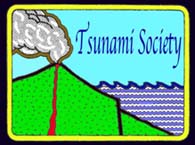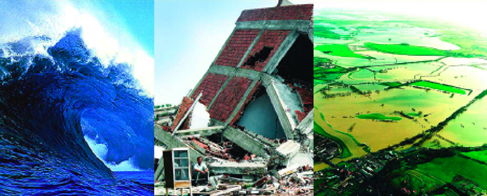ISSUES - Year 2009
ABSTRACTS
for Volume 28, No 1
EXPERIMENTAL AND COMPUTATIONAL ACTIVITIES AT THE OREGON
STATE UNIVERSITY NEES TSUNAMI RESEARCH FACILITY
S.C. Yim, D.T. Cox and M.M. Park - School of Civil and Construction Engineering, Oregon State University, Corvallis, Oregon, USA
ABSTRACT
A diverse series of research projects have taken place or are underway at the NEES Tsunami Research Facility at Oregon State University. Projects range from the simulation of the processes and effects of tsunamis generated by sub-aerial and submarine landslides (NEESR, Georgia Tech.), model comparisons of tsunami wave effects on bottom profiles and scouring (NEESR, Princeton University), model comparisons of wave induced motions on rigid and free bodies (Shared-Use, Cornell), numerical model simulations and testing of breaking waves and inundation over topography (NEESR, TAMU), structural testing and development of standards for tsunami engineering and design (NEESR, University of Hawaii), and wave loads on coastal bridge structures (non-NEES), to upgrading the two-dimensional wave generator of the Large Wave Flume. A NEESR payload project (Colorado State University) was undertaken that seeks to improve the understanding of the stresses from wave loading and run-up on residential structures. Advanced computational tools for coupling fluid-structure interaction including turbulence, contact and impact are being developed to assist with
the design of experiments and complement parametric studies. These projects will contribute towards
understanding the physical processes that occur during earthquake generated tsunamis including structural stress, debris flow and scour, inundation and overland flow, and landslide generated tsunamis. Analytical and numerical model development and comparisons with the experimental results give engineers additional predictive tools to assist in the development of robust structures as well as identification of hazard zones and formulation of hazard plans.
Science of Tsunami Hazards, Vol. 28, No. 1, page 1 (2009)
EXPERIMENTAL AND COMPUTATIONAL ACTIVITIES AT THE OREGON STATE UNIVERSITY NEES TSUNAMI RESEARCH FACILITY (1.1 MB) Compressed (376 KB)
------------------------------------------------------------------
VULNERABILITY ASSESSMENT OF CAR NICOBAR TO TSUNAMI HAZARD USING NUMERICAL MODEL
Tune Usha, M. V. Ramana Murthy, N. T. Reddy - ICMAM-PD, Ministry of Earth Sciences, Govt. of India, Pallikaranai, Chennai, INDIA
T. S. Murty - University of Ottawa, Ottawa, CANADA
VULNERABILITY ASSESSMENT OF CAR NICOBAR TO TSUNAMI HAZARD
USING NUMERICAL MODEL
ABSTRACT
The December 26, 2004 Sumatra earthquake’s epicenter was 163 kms away from Great Nicobar, the southern most island from the archipelago and hence it was strongly felt in the entire Andaman & Nicobar group of islands including Car Nicobar. 3400 people have lost their lives and most of the vital infrastructure were completely destroyed. The presents study aims to understand the vulnerability of the Car Nicobar coast to tsunami hazard from varied sources by using numerical model of tsunami propagation and run-up and compare it with the field data on inundation collected immediately after the tsunami using real time kinematic GPS. A tsunami vulnerability database has been builtup by modelling the past earth quakes recorded in this region. Elevation data collected using Airborne Laser Terrain Mapper (ALTM) was used to generate the inundation scenarios. A GIS database on the tsunami vulnerability of Car Nicobar to tsunami hazard is generated which would be immense use in mitigation and planning.
Science of Tsunami Hazards, Vol. 28, No. 1, page 15 (2009)
VULNERABILITY ASSESSMENT OF CAR NICOBAR TO TSUNAMI HAZARD USING NUMERICAL MODEL (4.2 MB) Compressed (640 KB)
------------------------------------------------------------------
ASSESSMENT OF POTENTIAL TSUNAMI GENERATION IN CHINA'S BOHAI SEA FROM DIRECT GEOTECTONIC AND COLLATERAL SOURCE MECHANISMS
G. Pararas Carayannis - Tsunami Society, Honolulu, Hawaii 96815, USA.
ABSTRACT
The Bohai Sea borders northeastern China's most populous and highest economic value coastal areas where several megacities are located. Critical infrastructure facilities exist or are under construction, including a nuclear power plant and super port facilities. Large reserves of oil have been discovered and a number of offshore oil platforms have been built. The extent of development along coastal areas requires a better assessment of potential tsunami risks. Although tsunamis do not pose as much of a threat as earthquakes in this region, locally destructive tsunamis have been generated in the past and future events could have significant impacts on coastal populations and China's economy, particularly because most of the development has taken place in low-lying regions, including river deltas. The present study examines the geotectonics of the Bohai basin region, the impact of past historical events, and the potential for local tsunami generation from a variety of direct and collateral source mechanisms triggered by intra plate earthquakes. More specifically, the present study examines: a)major active faults bounding the Bohai Basin; b) the resulting crustal deformation patterns of tectonic structures that have resulted in catastrophic earthquakes in recent years; c) the basin-wide extension - with local inversion - extending into the Bohai Sea that generated tsunamigenic earthquakes in 1888 and 1969; and d) deformational future seismic events with the potential to generate local tsunamis directly or by collateral mechanisms of folding, en-echelon bookshelf failures, or from destabilization/dissociation of structural accumulations of gas hydrate deposits within the basin's thick sedimentary stratigraphic layers.
Science of Tsunami Hazards, Vol. 28, No. 1, page 35 (2009)
ASSESSMENT OF POTENTIAL TSUNAMI GENERATION IN CHINA'S BOHAI SEA FROM DIRECT GEOTECTONIC AND COLLATERAL SOURCE MECHANISMS (3.0 MB) Compressed (680 KB)
------------------------------------------------------------------
GEOMORPHOLOGICAL AND SEDIMENTOLOGICAL CHANGES DURING AND AFTER THE DECEMBER-2004 INDIAN OCEAN TSUNAMI NEAR THE VELLAR RIVER AND THE M.G.R. ISLAND AREA OF THE CENTRAL TAMIL NADU COAST, INDIA
S. R. Singarasubramanian (1), M. V. Mukesh (1), K. Manoharan (1), P. Seralathan (2), K. Sujatha (1), and D. Bakkiaraj (1) - 1. Dept. of Earth Sciences, Annamalai University, Annamalainagar, Tamilnadu, INDIA; 2. Dept. of Marine Geology and Geophysics, Cochin University of Science and Technology, Cochin, Kerala, INDIA
ABSTRACT
The present study reviews geomorphic changes and sediment characteristics in the Vellar river and the M.G.R. island in the Cuddalore District, of Tamilnadu, India, caused by the 26th December, 2004 Indian Ocean Tsunami. The island has an area of about 12,000 m2 and it is separated from the mainland by a channel. It is bounded to the east by the Vellar River and to the north and south by the Muzhukkuthurai lagoon. A vegetated coastal dune with a length of about 1.5 km protected the island. Tsunami waves ranging in height from 4 to 6 meters breached the dunes, caused erosion and carried debris of destroyed coastal buildings westward to more than 50 m inland. The tsunami run up was up to 1.3 m. Very fine sand with a thickness of one meter filled the Muzhukkuthurai lagoon in the west. Heavy erosion resulted in a steep beach gradient. Sediments transported from the SE and the SSE direction resulted in greater accretion along the intertidal region. The sediment layer exhibited trampled and load structures, indicating deposition by the flooding and receding motion of the water, moving at high velocity. The sediments ranged from fine to medium in size and were well sorted.
Key Words: 2004 Indian Ocean Tsunami, breaching, sedimentation, trampled and load structures.
Science of Tsunami Hazards, Vol. 28, No. 1, page 67 (2009)
GEOMORPHOLOGICAL AND SEDIMENTOLOGICAL CHANGES DURING AND AFTER THE DECEMBER-2004 INDIAN OCEAN TSUNAMI NEAR THE VELLAR RIVER AND THE M.G.R. ISLAND AREA OF THE CENTRAL TAMIL NADU COAST, INDIA (7.8 MB) Compressed (488 KB)
------------------------------------------------------------------
INUNDATION MAPPING – A HAZARD STUDY BASED ON THE DECEMBER 26, 2004 TSUNAMI ALONG THE KARAIKAL COAST OF INDIA
K. Chittibabu – Dept. of Geology, National College, Trichirapalli, INDIA.
R. Baskaran – Dept. of Industries and Earth Sciences, Tamil University, Thanjavur, INDIA
ABSTRACT
A study of tsunami impact was undertaken along India’s Karaikal coast from Poovam in Karaikal to Nagore, Nagapatinam. An integrated approach was adopted for the preparation of thematic maps on land use, land cover and coastal geomorphology using multispectral remote sensing data. RTK GPS instruments were used for the collection of topographic data with contour intervals of 0.5m. The GIS tool was used to incorporate the elevation data, the extent of tsunami inundation and the thematic maps derived from remote sensing data. The present study highlights the most vulnerable areas of tsunami inundation and provides demarcations of suitable sites for rehabilitation.
Science of Tsunami Hazards, Vol. 28, No. 1, page 75 (2009)
INUNDATION MAPPING – A HAZARD STUDY BASED ON THE DECEMBER 26, 2004 TSUNAMI ALONG THE KARAIKAL COAST OF INDIA (1.9 MB) Compressed (364 KB)
------------------------------------------------------------------
Copyright © 2009 - TSUNAMI SOCIETY
TSUNAMI SOCIETY, 1741 Ala Moana Blvd. #70, Honolulu, HI 96815, USA.
WWW.TSUNAMISOCIETY.ORG




